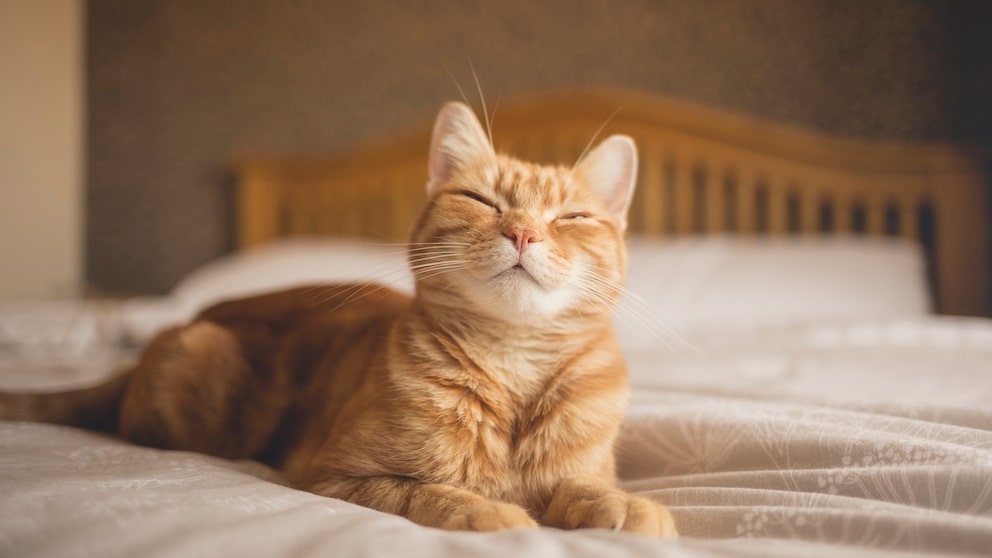April 11, 2025, 2:43 pm | Read time: 3 minutes
It sounds like a soft, melodious “murmur” — most cat owners have heard their pets cooing or trilling. However, very few know that there is a special meaning behind the sound. PETBOOK editor and cat behavior expert Saskia Schneider explains what cat cooing or trilling is all about.
Cats have a wide repertoire of sounds, most of which they have developed especially for us humans — because they communicate with each other primarily through body language. One sound that cats use relatively frequently when living with us is the so-called coo or trill. Never heard it before? Perhaps the term means nothing to you. But as a cat owner, you are guaranteed to hear this sound every day. Typically, when you approach your cat to stroke it. But where does cats’ cooing and trilling come from, and what does it mean?
Overview
What Is a Cat’s Trilling or Cooing Sound?
The best way to describe cooing or trilling is as a mixture of meowing and purring. It sounds something like a high-pitched “Brrr” or “Murr.” In contrast to meowing, cats do not open their mouths or hardly open them at all. For some, the pleasant, melodic sound almost sounds like singing.
A few examples of how the cooing or trilling sounds in different cats can be found in this YouTube video:
Where Does Cat Cooing and Trilling Come From?
Cooing or trilling is a sound that mother cats emit when they approach their offspring. It can be seen as a kind of greeting. It is intended to signal to the kittens that their mother is approaching.1
But adult cats that are familiar with each other also use cooing or trilling when they meet or when they want to invite the other to play. Animals also make these sounds towards us humans. For example, when we approach them or when they greet us in a relaxed manner. Sometimes, the cooing and trilling also turn into meowing, especially when the cat is excited.
What the Sounds Mean
First and foremost, we can understand the cat’s trilling and cooing as a greeting. It is as if the animals are saying, “Hey, there you are!” But cats also make these sounds in other situations. For example, when they want attention or are excited because they are about to eat something. 2
Cooing and trilling can also often be heard in cats in heat. In my experience, the animals even show it extremely extensively and constantly during this phase while they crouch on the floor with their rump raised and roll back and forth. 3

How to Tell If Your Cat Likes You

Understanding Cats Better — Body Language and Behavior Explained

The different sounds of guinea pigs and what they mean
My Cats Do Not Coo or Trill
Some cats rarely or even never use the sound. This does not mean that the cat does not want to greet us or does not have a close bond with us. They simply have other ways of communicating with their humans. For example, my two cats, Sweety (10 years old) and Nairobi (5 years old), rarely make these sounds — and when they do, they usually want attention or something to eat.
However, if your cat doesn’t coo or trill, it may simply be that you have not yet consciously noticed this sound. Pay attention to this when you approach your cat. It works best if the animal is in a relaxed state but not asleep. Approach the cat and stroke it gently. Then, there is a good chance that it will greet you with one of the sounds.
About the author: Dr. Saskia Schneider has a doctorate in biology. During her studies at the Free University of Berlin, she focused on zoology and animal behavior. In addition to training as an editor, she also trained as a behavioral consultant specializing in cats.


